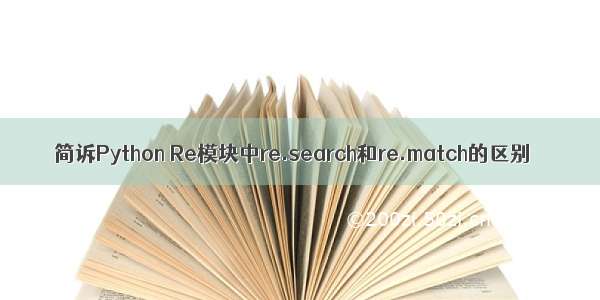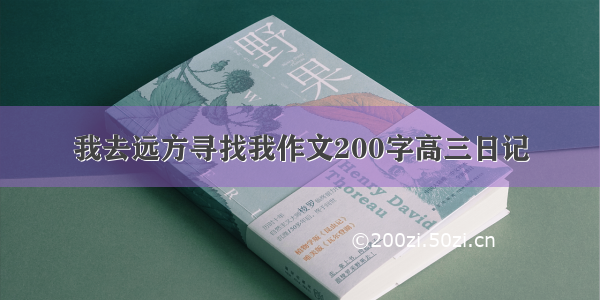
本文实例讲述了Python3中正则模块pile、re.match及re.search函数用法。分享给大家供大家参考,具体如下:
re模块 pile、re.match、 re.search
正则匹配的时候,第一个字符是 r,表示 raw string 原生字符,意在声明字符串中间的特殊字符不用转义。
比如表示 ‘\n',可以写 r'\n',或者不适用原生字符 ‘\n'。
推荐使用 re.match
pile() 函数
编译正则表达式模式,返回一个对象。可以把常用的正则表达式编译成正则表达式对象,方便后续调用及提高效率。
pile(pattern, flags=0)
pattern 指定编译时的表达式字符串
flags 编译标志位,用来修改正则表达式的匹配方式。支持 re.L|re.M 同时匹配
flags 标志位参数
re.I(re.IGNORECASE)
使匹配对大小写不敏感
re.L(re.LOCAL)
做本地化识别(locale-aware)匹配
re.M(re.MULTILINE)
多行匹配,影响 ^ 和 $
re.S(re.DOTALL)
使 . 匹配包括换行在内的所有字符
re.U(re.UNICODE)
根据Unicode字符集解析字符。这个标志影响 \w, \W, \b, \B.
re.X(re.VERBOSE)
该标志通过给予你更灵活的格式以便你将正则表达式写得更易于理解。
示例:
1
2
3
4
5
6
7
import re
content= 'Citizen wang , always fall in love with neighbour,WANG'
rr= pile(r'wan\w', re.I)# 不区分大小写
print(type(rr))
a= rr.findall(content)
print(type(a))
print(a)
findall 返回的是一个 list 对象
['wang', 'WANG']
re.match() 函数
总是从字符串‘开头曲匹配',并返回匹配的字符串的 match 对象 。
re.match(pattern, string[, flags=0])
pattern 匹配模式,由 pile 获得
string 需要匹配的字符串
1
2
3
4
5
6
7
8
9
10
11
12
13
14
15
16
17
18
19
20
21
22
import re
pattern= pile(r'hello')
a= re.match(pattern,'hello world')
b= re.match(pattern,'world hello')
c= re.match(pattern,'hell')
d= re.match(pattern,'hello ')
if a:
print(a.group())
else:
print('a 失败')
if b:
print(b.group())
else:
print('b 失败')
if c:
print(c.group())
else:
print('c 失败')
if d:
print(d.group())
else:
print('d 失败')
hello
b 失败
c 失败
hello
match 的方法和属性
1
2
3
4
5
6
7
8
9
10
11
12
13
14
15
16
17
18
19
import re
str = 'hello world! hello python'
pattern= pile(r'(?Phell\w)(?P\s)(?P.*ld!)')# 分组,0 组是整个 hello world!, 1组 hello,2组 ld!
match= re.match(pattern,str)
print('group 0:', match.group(0))# 匹配 0 组,整个字符串
print('group 1:', match.group(1))# 匹配第一组,hello
print('group 2:', match.group(2))# 匹配第二组,空格
print('group 3:', match.group(3))# 匹配第三组,ld!
print('groups:', match.groups())# groups 方法,返回一个包含所有分组匹配的元组
print('start 0:', match.start(0),'end 0:', match.end(0))# 整个匹配开始和结束的索引值
print('start 1:', match.start(1),'end 1:', match.end(1))# 第一组开始和结束的索引值
print('start 2:', match.start(1),'end 2:', match.end(2))# 第二组开始和结束的索引值
print('pos 开始于:', match.pos)
print('endpos 结束于:', match.endpos)# string 的长度
print('lastgroup 最后一个被捕获的分组的名字:', match.lastgroup)
print('lastindex 最后一个分组在文本中的索引:', match.lastindex)
print('string 匹配时候使用的文本:', match.string)
print('re 匹配时候使用的 Pattern 对象:', match.re)
print('span 返回分组匹配的 index (start(group),end(group)):', match.span(2))
返回结果:
group 0: hello world!
group 1: hello
group 2:
group 3: world!
groups: ('hello', ' ', 'world!')
start 0: 0 end 0: 12
start 1: 0 end 1: 5
start 2: 0 end 2: 6
pos 开始于: 0
endpos 结束于: 25
lastgroup 最后一个被捕获的分组的名字: last
lastindex 最后一个分组在文本中的索引: 3
string 匹配时候使用的文本: hello world! hello python
re 匹配时候使用的 Pattern 对象: pile('(?Phell\\w)(?P\\s)(?P.*ld!)')
span 返回分组匹配的 index (start(group),end(group)): (5, 6)
re.search 函数
对整个字符串进行搜索匹配,返回第一个匹配的字符串的 match 对象。
re.search(pattern, string[, flags=0])
pattern 匹配模式,由 pile 获得
string 需要匹配的字符串
1
2
3
4
5
6
7
8
9
10
11
12
13
14
15
16
17
18
19
import re
str = 'say hello world! hello python'
pattern= pile(r'(?Phell\w)(?P\s)(?P.*ld!)')# 分组,0 组是整个 hello world!, 1组 hello,2组 ld!
search= re.search(pattern,str)
print('group 0:', search.group(0))# 匹配 0 组,整个字符串
print('group 1:', search.group(1))# 匹配第一组,hello
print('group 2:', search.group(2))# 匹配第二组,空格
print('group 3:', search.group(3))# 匹配第三组,ld!
print('groups:', search.groups())# groups 方法,返回一个包含所有分组匹配的元组
print('start 0:', search.start(0),'end 0:', search.end(0))# 整个匹配开始和结束的索引值
print('start 1:', search.start(1),'end 1:', search.end(1))# 第一组开始和结束的索引值
print('start 2:', search.start(1),'end 2:', search.end(2))# 第二组开始和结束的索引值
print('pos 开始于:', search.pos)
print('endpos 结束于:', search.endpos)# string 的长度
print('lastgroup 最后一个被捕获的分组的名字:', search.lastgroup)
print('lastindex 最后一个分组在文本中的索引:', search.lastindex)
print('string 匹配时候使用的文本:', search.string)
print('re 匹配时候使用的 Pattern 对象:', search.re)
print('span 返回分组匹配的 index (start(group),end(group)):', search.span(2))
注意 re.search 和 re.match 匹配的 str 的区别
打印结果:
group 0: hello world!
group 1: hello
group 2:
group 3: world!
groups: ('hello', ' ', 'world!')
start 0: 4 end 0: 16
start 1: 4 end 1: 9
start 2: 4 end 2: 10
pos 开始于: 0
endpos 结束于: 29
lastgroup 最后一个被捕获的分组的名字: last
lastindex 最后一个分组在文本中的索引: 3
string 匹配时候使用的文本: say hello world! hello python
re 匹配时候使用的 Pattern 对象: pile('(?Phell\\w)(?P\\s)(?P.*ld!)')
span 返回分组匹配的 index (start(group),end(group)): (9, 10)
PS:这里再为大家提供2款非常方便的正则表达式工具供大家参考使用:
希望本文所述对大家Python程序设计有所帮助。
















